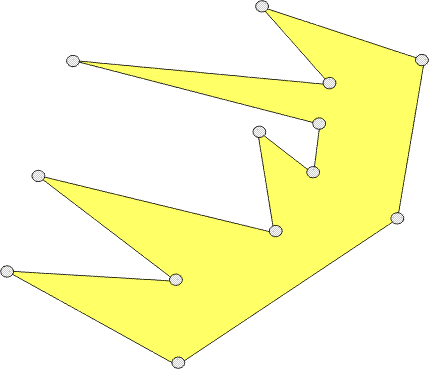

We will discuss how to place guards in corners (vertices) of an art gallery whose form is a simple closed polygon, in such a way that together they supervise the whole gallery---every part of it can be seen by at least one guard. The question is how to place them such that the fewest number of guards is needed.

Placing the guards at the walls but not necessarily in vertices could sometimes reduce the number of guards needed further, but here we will stick to the condition that they have to be at vertices.
It is obvious that the number n of guards will always suffice---it is also a natural measure of how difficult the task may be. Trying some examples, one may observe that usually one can guard n-vertex galleries with at most n/3 guards. This was Klee's conjecture, shown by Chvatal:

Conclusion: Now every color class sees the whole gallery, since every point of the gallery lies in a triangle, which has three differently colored vertices, therefore can be seen by each color class. Since the number of blue vertices plus the number of green vertices plus the number of yellow vertices equals n, one of these three numbers (in our example the number of green vertices) must be smaller or equal to n/3. We place the guards on the vertices of that color .
Note that this result doesn't answer all questions one might have about guarding art galleries. Even though we know that we always need at most n/3 guards, for some galleries we need less, but the procedure above does not give us a hint of how to find such minimal/optimal guard distributions.
Here you can find more examples.